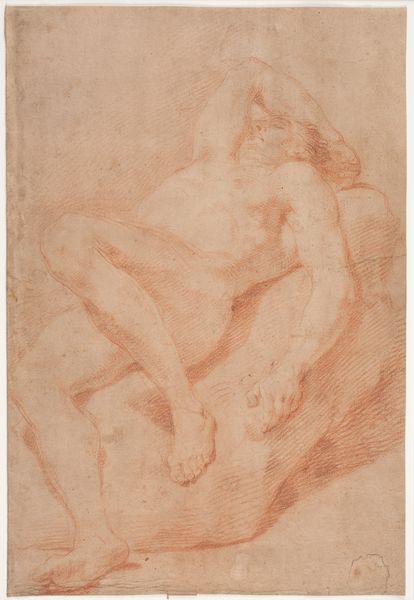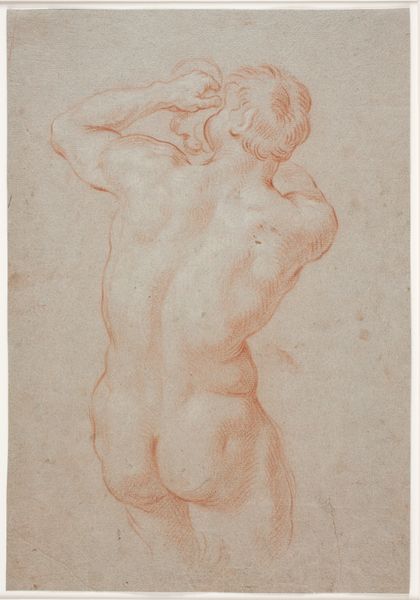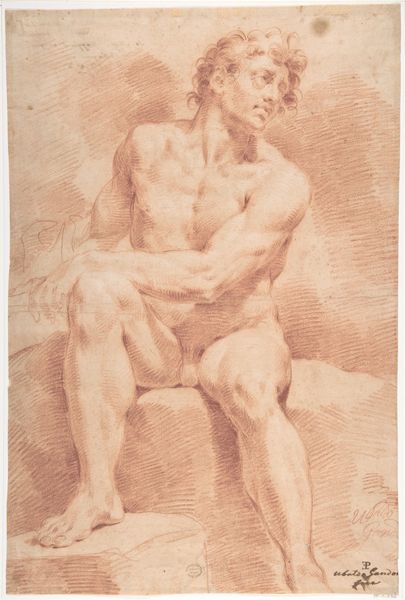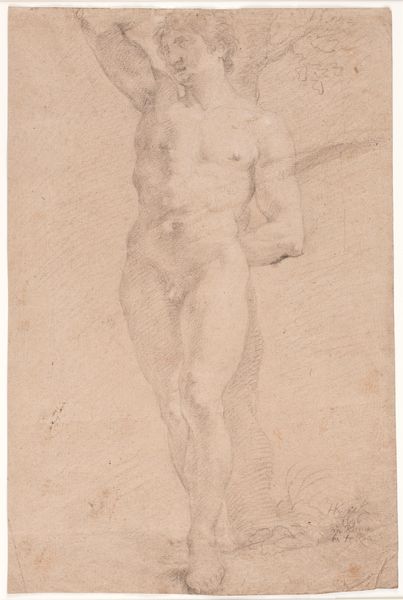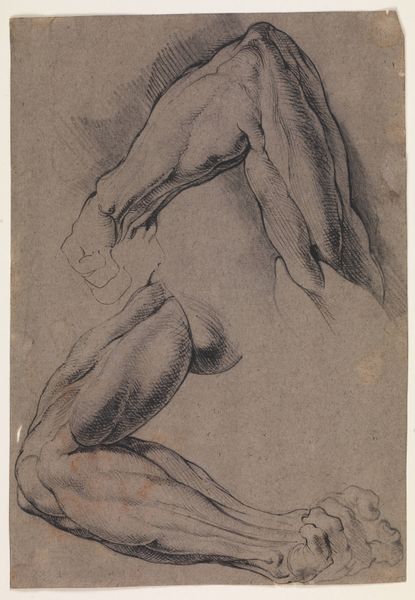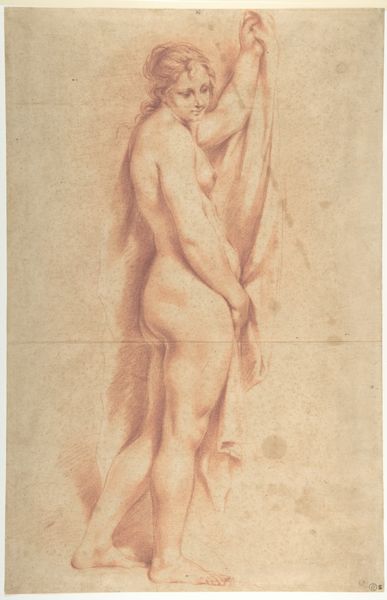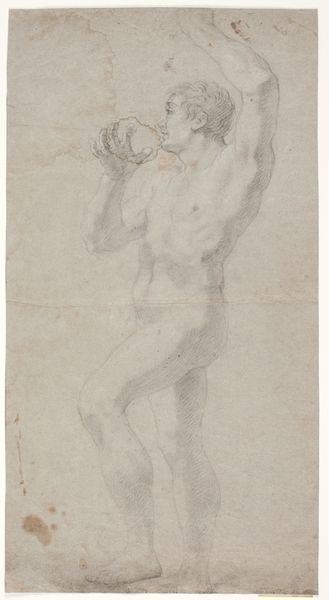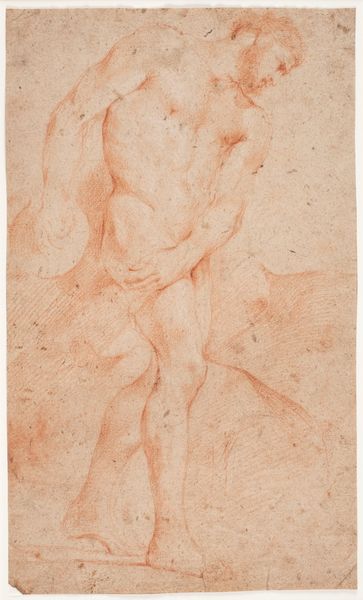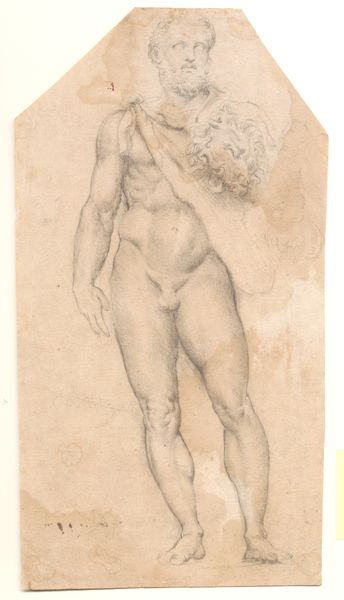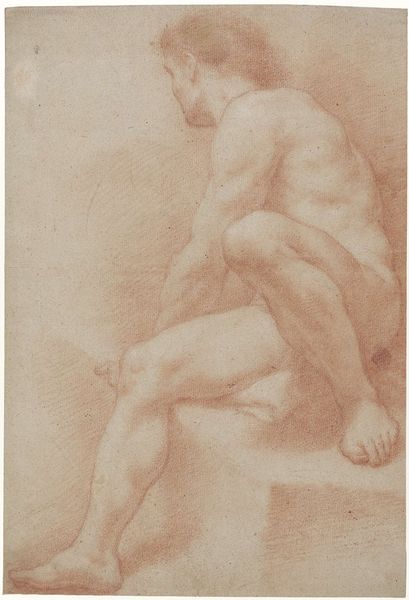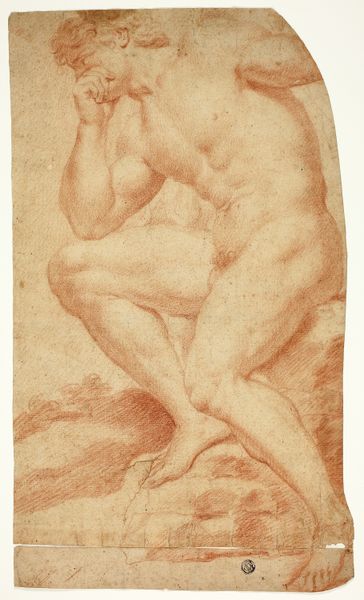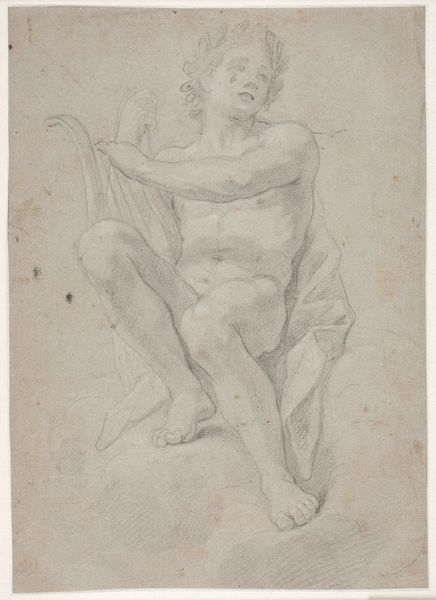
drawing, dry-media
#
portrait
#
drawing
#
dry-media
#
portrait drawing
#
history-painting
#
nude
Dimensions: 530 mm (height) x 334 mm (width) (bladmaal)
Curator: Before us, we have "Mandlig modelstudie," a drawing created between 1671 and 1738 by Hendrik Krock, here on display at the SMK. It's rendered with dry media, likely chalk, and depicts a male nude study. Editor: My initial reaction is one of classical stoicism. There's a palpable sense of tension, almost burdened contemplation, radiating from the figure. The limited color palette adds to the sense of severity. Curator: Precisely. These studies were integral to history painting in Krock's time. They represent more than just anatomical exercises; they are explorations of ideal masculinity and its representation within power structures. Consider, too, the use of the red chalk. Was it easily available? Who could afford it? How does that choice reflect or influence this work? Editor: You raise a key point. The reddish hue lends an almost melancholic cast, subtly humanizing the subject. I'm drawn to the way Krock renders light and shadow – there's a raw immediacy to it. One might ask if this model represents some aspirational vision, but it equally hints at the socioeconomic realities of his profession, which are less examined. The institution surely has to address that tension? Curator: Indeed. It becomes a point of debate. While Krock was definitely inspired by idealized forms present in, say, the Italian Renaissance, it's vital that the dialogue about this piece engages with questions around male gaze and representation of the body within its historical context. Can we reclaim, reassess? Editor: I concur. Even though this work seemingly conforms to the art academy structure of that period, it's our task to provide access points that are sensitive to issues like accessibility, intersectionality, and critical artistic practices. Curator: It's true, art institutions like the SMK play a vital role in framing this kind of artwork for contemporary conversations. Thanks to art historical interpretation and social theory, we can offer newer perspectives on its artistic values. Editor: This piece reminds us how necessary those types of perspectives truly are, allowing this "Mandlig modelstudie" to still speak in our age.
Comments
No comments
Be the first to comment and join the conversation on the ultimate creative platform.
